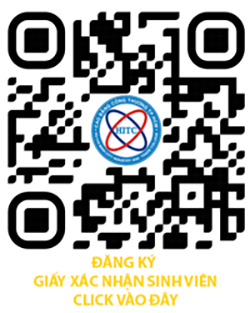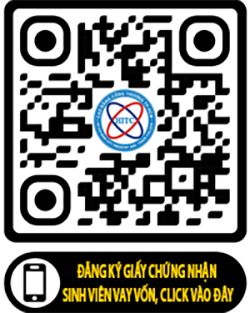Why Is Reconciliation Important in Accounting?
11-03-2022
Nguyễn Phú
Reconciliation can help you monitor your cashflow so you have enough to cover your business needs. Perhaps the Excel spreadsheet you used to calculate the journal entry has a formula error. Some or all of these will happen at some point in the life of every business. But if you don’t reconcile your accounts regularly, you might not catch mistakes as they arise. Companies can perform the accounting reconciliation process as often as they want, but most prefer to do it on a monthly basis following financial close. That’s why many organizations turn to accounting software to handle this so they can instead focus on more strategic priorities.
To ensure that all cash balance, liabilities, and assets are updated, periodic accounts reconciliation is required. There may be instances where a mistake or error causes a discrepancy between the general ledger and the supporting data. There may be instances where activity is captured in the general ledger but not the supporting data or vice versa, which may be due to a timing difference. We hope you’ve gained a clear understanding of account reconciliation, the different types such as balance sheet and general ledger reconciliation, and their crucial role in business operations. Remember, maintaining accurate financial records is a significant factor that keeps the wheels of your business turning smoothly. It aids in informed decision-making, ensures compliance with financial regulations, and significantly contributes to the overall financial success of your organization.
Ledger and bank balances don’t match
Another way of performing a reconciliation is via the account conversion method. Here, records such as receipts or canceled checks are simply compared with the entries in the general ledger, in a manner similar to personal accounting reconciliations. Reconciliation is an accounting procedure that compares two sets of records to check that the figures are correct and in agreement. Reconciliation also confirms that accounts in a general ledger are consistent and complete.
- Every company has its own rules and regulations regarding the frequency of its reconciliations.
- Once all outstanding issues have been resolved, the accounts can be marked as reconciled and signed off by an authorized person.
- In this case, a company will compare the accounts payable captured in its books with the balance provided in documentation from their vendors.
- If you have any further questions, you’re always welcome to book office hours with the Synder team.
While some fraudsters exhibit a true evil genius in covering their tracks, most thieves aren’t that clever. Careful attention to details and review of reconciliations by someone who doesn’t work with that account can help catch many instances of fraud. In these situations, accounting teams greatly benefit from having a collaborative accounts receivable solution, which allows them to communicate directly with customers in a single platform. But oftentimes when you receive a payment, the customer may have neglected to send remittance advice telling your accounting staff where to apply the payment. In these cases, you’ll need to get in touch with the customer, which could delay the reconciliation process. While the entries in the general ledger are based on the facts of the moment, they may not always be accurate.
Treasury Risk
You should also remember to address any unresolved discrepancies as soon as possible. If you take the time to identify and resolve problems quickly, you’ll save yourself a lot of stress in the long run. Keep in mind that most vendors won’t waive a fee on the original transaction.
Automating Accounts Payable Reconciliation
The same can be said about a reconciliation process without a monitoring lead. Contrary to popular belief, this person does not have to be management, and the role is often a good way to develop up-and-comers in the organization. The main duties of the monitoring lead include tracking the completion status of all reconciliations, making sure the reconciliations are finished on time, and following up on incomplete or late reconciliations.
Leadership must then rely on word of mouth or manual checks to ensure policies were properly followed. Templates are designed to replace error-prone spreadsheets, allowing accountants to perform reconciliations within the BlackLine software. Accountants can automatically roll-forward items, attach support, and eliminate formula errors. Whether you’re new to F&A or an experienced professional, sometimes you need a refresher on common finance and accounting terms and their definitions. BlackLine’s glossary provides descriptions for industry words and phrases, answers to frequently asked questions, and links to additional resources. While the responsibility to maintain compliance stretches across the organization, F&A has a critical role in ensuring compliance with financial rules and regulations.
Usually, you reconcile your books at the end of the accounting period to ensure the general ledger balance is complete and accurate. Check with your accountants, accounting managers, and controllers about the challenges they face in closing the books. Ask specifically about the types of errors or omissions they see when reconciling books. Choosing the right automated account reconciliation software can be a daunting task.
Account reconciliation is comparing two sets of financial records to ensure they are accurate and consistent. This process is typically used to reconcile general ledger(GL), sub-ledgers (SL), bank statements, and other financial accounts with the corresponding records in an organization’s accounting system. Bank reconciliation statements compare bookkeeping training programs transactions from financial records with those on a bank statement. Where there are discrepancies, companies can identify and correct the source of errors. Here, a company will compare its outstanding customer balances to the accounts receivable captured in the general ledger to unveil any irregularities in customer-level accounting.
Here’s an overview of how to do accounts reconciliation to ensure your company’s financial positions stay accurate. Reconciling accounts and comparing transactions also helps your accountant produce reliable, accurate, and high-quality financial statements. This saves your company from paying overdraft fees, keeps transactions error-free, and helps catch improper spending and issues such as embezzlement before they get out of control. Sometimes a deposit or a payment recorded in your accounting software isn’t on the monthly bank statement. When paper checks were the main way that vendors and employees were paid, this was a much bigger problem.
Customer reconciliation
This process involves verifying that all payments have been made correctly and ensuring that all debts are accurately accounted for. By taking these steps, businesses can make sure their accounts remain updated and accurate. Most accounting software solutions don’t have detailed native integrations with all of the payment platforms you might be using. Synder provides you with such an option and helps you cover the other half of account reconciliation.
HighRadius Autonomous Finance Platform
When the company pays the bill, it debits accounts payable and credits the cash account. Again, the left (debit) and right (credit) sides of the journal entry should agree, reconciling to zero. It aids in informed decision-making, ensures compliance with financial regulations, and significantly contributes to the overall financial success of your organisation. With proper diligence and attention to detail during the reconciliation process, businesses can easily handle any discrepancies that arise without having to worry about costly errors down the line. In order to do this successfully, one must stay up-to-date on best practices for resolving discrepancies quickly and accurately while ensuring the ongoing accuracy of their financial records.
Cash Balance in the Ledger & Bank Account
This year, the estimated amount of the expected account balance is off by a significant amount. This step may not be necessary for smaller businesses with limited activity. But if you’re processing a lot of transactions, it can be an eye-opening experience to review a comparative trial balance. I was excited until I realized my primary job was to reconcile five bank accounts, none of which had been reconciled for over a year.
Explore the future of accounting over a cup of coffee with our curated collection of white papers and ebooks written to help you consider how you will transform your people, process, and technology. Global brands and the fastest growing companies run Oracle and choose BlackLine to accelerate digital transformation. BlackLine delivers comprehensive solutions that unify accounting and finance operations across your Oracle landscape. Retailers are recalibrating their strategies and investing in innovative business models to drive transformation quickly, profitably, and at scale. Save time, reduce risk, and create capacity to support your organization’s strategic objectives. Accelerate dispute resolution with automated workflows and maintain customer relationships with operational reporting.
Bài viết khác
- BAN HÀNH QUY ĐỊNH ĐÁNH GIÁ RÈN LUYỆN SINH VIÊN HỆ CHÍNH QUY TRƯỜNG CAO ĐẲNG CÔNG THƯƠNG THÀNH PHỐ HỒ CHÍ MINH
- THÔNG BÁO NHẬN HỌC BỔNG HAI ANH CHỊ EM RUỘT HỌC CHUNG MỘT TRƯỜNG HỌC KỲ 1 NĂM HỌC 2024 – 2025
- HƯỚNG DẪN THỰC HIỆN ĐÁNH GIÁ RÈN LUYỆN SINH VIÊN HỆ CHÍNH QUY HỌC KỲ II NĂM HỌC 2023 – 2024
- THÔNG BÁO HƯỚNG DẪN THỰC HIỆN CHẾ ĐỘ ĐỐI VỚI HỌC SINH, SINH VIÊN NĂM HỌC 2024-2025
- THÔNG BÁO DANH SÁCH SINH VIÊN ĐƯỢC NHẬN HỌC BỔNG 50% HỌC PHÍ HỌC KỲ II NĂM HỌC 2023-2024 ĐỐI TƯỢNG HAI ANH CHỊ EM RUỘT HỌC CHUNG TRƯỜNG
- THÔNG BÁO CHI TIỀN HỖ TRỢ ĐI LẠI VÀ MUA ĐỒ DÙNG CÁ NHÂN TOÀN KHÓA HỌC
- THÔNG BÁO HỌC BỔNG – CHÍNH SÁCH NỘI TRÚ HỌC KỲ 1 NĂM HỌC 2023-2024
- THÔNG BÁO HỌC BỔNG – ĐỐI TƯỢNG HAI ANH CHỊ EM RUỘT HỌC CHUNG TRƯỜNG HỌC KỲ 1- NĂM HỌC 2023-2024
- THÔNG BÁO DANH SÁCH SINH VIÊN ĐƯỢC MIỄN, GIẢM HỌC PHÍ HK 1 NĂM HỌC 2023-2024
- THÔNG BÁO NỘP HỒ SƠ MIỄN, GIẢM HỌC PHÍ HỌC KỲ I – NĂM HỌC 2023-2024
- Kết quả đánh giá rèn luyện khóa 44, 45, 46 năm học 2022-2023
- Thông báo nhận học bổng – đối tượng hai anh chị em ruột chung trường học kỳ II (2022-2023)
- Скачать приложение Mostbet для Android APK и iOS в 1 клик 202
- Аzərbаyсаndа Ən Yаxşı Bukmеykеr Kоntоrlаrınа Bаxış Xətt Üzrə Idmаn Mərсləri Dmаn-аz Со
- Vulkan Vegas Kasyno Opinie 2023 3000 Pln + 125 Spinó










 Hôm nay :
78
Hôm nay :
78  Hôm qua :
194
Hôm qua :
194  Tổng lượt :
3135226
Tổng lượt :
3135226  Người đang online :
1
Người đang online :
1